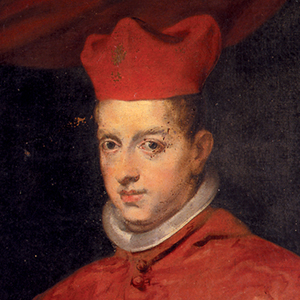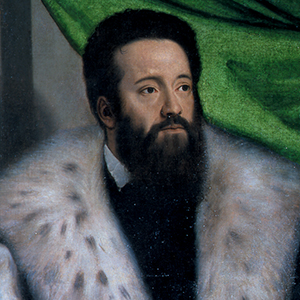Apollo and Python’s room contains some scenes taken from the first book of the Metamorfosi by Ovid in the fanlight. The decoration of the room, once a little dilapidated and difficult to make out, has recently been restored, making it easier to follow. In particular, in the second fanlight on the side of the room from which you have just entered, the figure of Apollo is recognisable as the character who struck and killed the monster Python, an enormous serpent born of the earth after Jupiter had punished humanity with a giant flood.

The portrait of Cardinal-Infante Ferdinando, third son of Philip III of Spain, is a work of great interest, both for the quality of the painting and for the importance of the subject. Ordained as archbishop of Toledo at the age of ten, he would become cardinal the following year. In 1633, in his role as Governor of the Netherlands, he stayed in Genoa as a guest of the Dorias. Five years before, Rubens had created a portrait of the cardinal of which multiple versions were made, as was typical of people of such a standing. The most famous, painted by the great Antwerp-based artist, is held at the Alte Pinakothek in Munich. The Doria copy is a variation on the same work, most likely painted at Rubens’ studio, with the artist himself possibly working on the most challenging parts.

This portrait of Francesco II Sforza, second-born of Ludovico il Moro and Beatrice d’Este, has a rather complicated history. The painting is a portrait of the Duke by Tiziano, of which other versions exist, and could be described as a lost version. At the top-left, there appears to be an inscription identifying the subject of the piece as being Marco Antonio Landi, ancestor of Polissena Landi, wife of Giovanni Andrea II Doria. It is clear that the text was superimposed during the subsequent years with the aim of re-using the portrait to depict another person. A century after the original work, and perhaps having lost record of Sforza, the Dorias wanted to re-use a painting already in their collection to celebrate their forefather, Landi.